





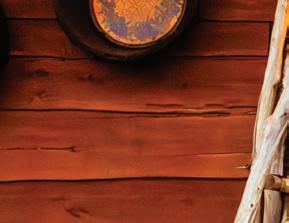

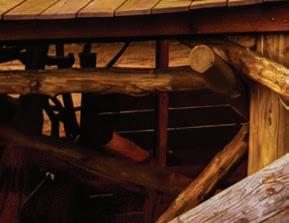



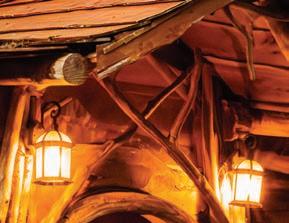
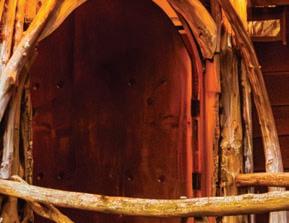












































































































Welcome to the wonderful world of luxury power motion seating. Meet Mira, a perfect commingling of form and function. Mira is high design supported by excellent quality and boasts a unique power motion recline system on every seat, fully hidden when closed and easily dispatched for the ultimate in comfort. Made in Italy by skilled craftsmen and directly imported by Copenhagen, our Mira seating series is available in sofa and sectional models for quick delivery. Choose from our luxurious in-stock covers, or custom order from a vast selection of fabrics and leathers.
Sofa with two power seats (shown) in high-end elephant grey fabric $5,595
Sectional with three power seats in easy-care, suede-like protected neutral grey leather $10,998
















ANINE BING AWAY BLUE NILE
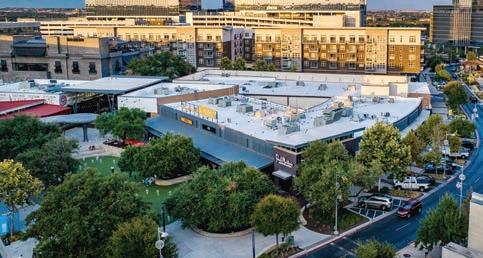
BREITLING BRILLIANT EARTH CB2 CHANEL CULINARY DROPOUT
QUAY RAILS REFORMATION RH THE GALLERY SEPHORA SHOWROOM SPRINKLES
OVER 130 STORES AND RESTAURANTS, WITH MANY EXCLUSIVE TO AUSTIN.















Where your soul’s purpose becomes your sole purpose.
Santa Fe is the ultimate muse for uncovering a new purpose and passion for your soul. It’s as if the city’s landscapes, both natural and artistic, conspire to awaken dormant dreams and spark new enthusiasm. A place where the mundane dissolves into the miraculous. It’s just one of the things that makes The City Di erent, but there’s still so much waiting to be uncovered.









42
From glamping in a cozy treehouse to swimming with otters, these Lone Star adventures are worth the trip.
58
Will Central Texas run out of water?
As the state battles drought, suburban development and a booming tech industry have only made matters worse.



AI is the future, and Austin is helping to lead the way 23
Tattoo artist Dillon Forte’s Wimberley ranch looks to sacred geometry 26
The capital city’s plans to tear down its convention center 28
Inside the trend of members-only social clubs and workspaces 30
East Side eateries get a glow-up thanks to one neon signmaker 35
Find elevated ri s on fast food classics at these local restaurants 37
A winemaking collective is changing the game by looking in their own backyard 38














May/June 2024 | Vol. 32 | No. 3
General Manager Randi Stevenson
Editor-in-Chief Madeline Hollern
Creative Director Becky Plante
EDITORIAL
Executive Editor Bryan C. Parker
Associate Editor Saba Rahimian
Contributing Writers
Asher Elbein, Hamilton Jones, Ali Khan, Laurel Miller, Max Puglisi
ART
Contributing Photographers
Leonid Furmansky, Robert Gomez, Wynn Myers, Constanza Ulloa-Colina, Samantha Wiley
Contributing Illustrators
Julia Dufosse, Thiago Lopes, Derek Zheng, Christina S. Zhu
DIGITAL
Digital Manager Abigail Stewart
ADVERTISING
Sales Director Molly Lochridge
Account Director Dana Horner
Senior Account Executive Jenn Tully
Sales Operations Manager Kiely Whelan
EVENTS
Events Director Lauren Sposetta
CIRCULATION
Audience Development Director Tom Nork
Circulation Manager Julie Becker
ACCOUNTING
Accounting Manager Sabina Jukovic



1712 Rio Grande St., Ste. 100 Austin, TX, 78701, 512-263-9133
Advertising inquiries: advertising@austinmonthly.com
Letters to the Editor: feedback@austinmonthly.com
Subscriptions, Renewals, and Address Changes: Austin Monthly, PO Box 2127, San Antonio, TX 78297-2127, 512-387-6234, subscriptions@austinmonthly.com or online at austinmonthly.com/subscribe. Back Issues and Bulk Orders: info@austinmonthly.com
WEBSITE AND SOCIAL MEDIA austinmonthly.com



























Specialized treatment and procedures for women and children.
TEXAS CHILDREN’S HOSPITAL NORTH AUSTIN CAMPUS IS NOW OPEN.
The new state-of-the-art $485 million facility is now seeing patients for all kinds of care, from the simple to the most complex. All the life-changing care and world-class physicians of Texas Children’s Hospital bring a new level of care to Austin. It’s the right doctors. The right care. All right here in Austin.









See why the difference is life-changing at texaschildrensaustin.org.

A SAFARI-STYLE TENT. Breathtaking views. A cedar-wrapped hot tub. I already had plenty to look forward to as I prepared for my stay at Getaway Ranch near Canyon Lake. But the day before my visit, as I pored through the website’s lengthy list of amenities, I was most intrigued by what they lacked: We do not have wifi on site, the retreat noted.
While a break from internet access might strike terror in some hearts, for me, it was the most alluring prospect of the trip. Here, I wouldn’t have a Pavlovian twinge of anxiety every time I heard the ding of an email alert or Slack notification. Instead, my guest and I simply had to unplug. As we squeezed limes into fresh margaritas and sat under the stars by the glowing fire pit—laptops and phones out of sight—I felt a sense of relaxation that I hadn’t experienced in months.
In truth, our modern world of constant connectivity can make it feel like the work never stops. That’s why carving out time for a real vacation is more important than ever. For our latest cover feature, “60 Fun Ways to Explore Texas This Summer” (page 42), we scoured the Lone Star State for getaways that would help our readers escape the frenetic pace of day-to-day life while creating indelible memories. Whether you want to swim with otters at Blue Hills Ranch Resort in McGregor, test your skills with glow-in-thedark skeet shooting in Waxahachie, or walk through a fridge at the new Meow Wolf art installation in Grapevine, the article presents dozens of adventurous ways to unwind.
While the summer months usher in the return of travel season, they also bring back unending triple-digit temperatures. The memory of last year’s record-breaking heat recalls a growing concern: drought. In his meticulously reported feature, “High and Dry” (page 58), journalist Asher Elbein explores the looming danger of water shortages across Central Texas. As the area faces the one-two punch of population boom paired with extreme weather, city councils and conservationists are scrambling for solutions to combat our diminishing aquifers and lakes.
Just as water is a precious resource, so is time. This summer, make a point to schedule a restorative retreat, even if it’s just a day trip spent in nature. Our technological world may never slow down, but we reap the benefits when we step away from the screens.

Madeline Hollern Editor-in-Chief
mhollern@austinmonthly.com @madelinehollern @madelinehollern





InBastrop,Texas,itallstartswithexploring hiddengemsinhistoricdowntown,followed byathrillingziplineexperiencethroughthe treetopsofLostPines.Then,takethecrewto LakeBastropandspendthenightunderthe Texasstars.Andthat’sjusthalfofit.We welcomeyoutomakeyourselfathomeand enjoyourspecialbrandofTexashospitality.









Artificial intelligence is everywhere. Here’s how Austin is shaping the innovation and regulation of the cutting-edge tech.
BY BRYAN C. PARKER

DONNING A WHITE cowboy hat and brown boots, ICON co-founder Jason Ballard stood on the stage at the Long Center, staring out over an enthusiastic crowd. Thousands had gathered during SXSW to hear the latest updates from the luminary tech company known for 3D printing homes. Among the new advancements touted at the March event was an artificial intelligence tool called Vitruvius, which has the power to take end-user prompts and generate external and internal renderings of homes in a matter of seconds. Within a year, ICON aims to deliver buildable plans for the stunning visual images, all created by its AI system. But the company’s announcement is merely one example of the groundbreaking work emerging from the technology. Name an industry, and it seems that AI is rewriting the book on how it operates.
Being a tech hub is nothing new for the capital city, whose legacy began in the ’60s with the arrival of Texas Instruments and was solidified two decades later with the founding of Michael Dell’s juggernaut of a computing company when he was still a student at UT. Last July, a study by the Brookings Institute named Austin one of 13 “early adopter” sites boasting a concentration of AI jobs, evidence of the city’s readiness to be a major player in the next wave of technological leaps.
For starters, practically every huge tech company has a foothold in the city, including Google, Amazon, Apple, and Meta—all of which are heav-
ily involved in research and development of artificial intelligence applications. It also helps that the University of Texas produces a fresh crop of talent with each graduating class thanks to top-tier engineering programs. This past January, UT announced the Center for Generative AI, a physical infrastructure of graphics processing units (GPUs) that can conduct complex mathematical computations and are adept at formulating AI models.
But ICON director of AI research Charles duHadway sees a local mindset that transcends these cornerstone entities and owes something to the independent self-made ethos of the Lone Star State. “There’s something unique to Texas and Austin about being creative and building new things in the real world,” duHadway says. As a counterpoint, the exec cites San Francisco, whose storied tech industry leans into software or, more recently, virtual reality. In contrast, the team at ICON builds tools that use AI to achieve tangible products in the form of livable homes.
Likeminded Tesla, with headquarters on the Southeast outskirts of the city, constitutes another example of a tech-driven company with a physical output. The group’s Cybertrucks, which rely on AI to power their autonomous driving features, have been a buzzworthy topic throughout the early part of 2024. Tesla CEO Elon Musk moved the business’ headquarters to the Austin area from Palo Alto in 2021, citing California’s restrictive regulations and
ICON’s AI architecture platform Vitruvius generates stunning renderings from user prompts within seconds.
Fervor around AI dominates the economy and job market.
$240 billion
Estimated value of the AI industry in 2024, with an expectation for it to exceed $1 trillion before the end of the decade.
40%
Growth rate of tech market jobs in Austin between 2020 and 2022.
500+
AI jobs available in the Austin area, according to Indeed.com as of April 1.
$135 million
Initial funding (per tech website Built in Austin) raised by Elon Musk’s artificial intelligence company, xAI, which is developing a chatbot called Grok.
66%
Portion of jobs that can be at least partly automated by AI, per a 2023 report by Goldman Sachs.
tax laws. His statements hint at key factors that may be secondary to innovation but are no less important in Austin’s role in guiding AI conversations.
As one of the most powerful and populous states in the U.S., Texas has a track record of being a bellwether in terms of both public policy and industry trends. This past February, Sen. Ted Cruz filed a federal bill aimed at blocking a proposed SEC rule on how financial advisors can use AI. In keeping with Musk’s ideology, Cruz suggested that the regulation would stymie technological advancement. And the politician isn’t the only voice in the capital city with a direct line to the lawmakers who set standards around the fast-evolving new tech.
Tariq Shaukat is co-CEO for Austin-based company Sonar, which was recently selected for a federal task force dubbed the U.S. AI Safety Institute Consortium, created via an executive order from President Joe Biden. “We have to be careful not to stifle innovation and not have everything slowed down, because governments move slower than tech by their nature,” says Shaukat, who previously headed the AI solutions lab at Google Cloud. But even as we marvel at the power of our new robotic overlords, it makes sense to put some guardrails in place.
To achieve a balance, Shaukat cites two core avenues for ensuring AI safety. The first involves examples where most people can agree that use of the technology crosses some ethical line. In January, thousands of Americans received a robocall from an AI-generated voice impersonating President Biden and encouraging them not to vote in the primary election. The Dallas-based company responsible for those calls quickly landed in hot water. In cases like that, Shaukat sees a clear-cut misuse of tech that could be regulated legally.
The second approach calls for a softer touch. “You can provide guidelines, and I think responsible companies understanding best practices and adhering to a code of conduct is going to be important,” Shaukat explains. The federal AI consortium can help to establish such ground rules for the industry—for example, o ering guidance on the appropriate data set size needed to develop an AI algorithm.
At the state level, Gov. Greg Abbott has also formed an advisory council, which tapped two Austinites with backgrounds in law and cybersecurity. The express purpose of the committee is to study and monitor artificial intelligence systems “developed, employed, or procured by state agencies.” In light of debacles like the Biden robocalls, there may even be rare moments of (gasp!) bipartisan agreement that regulation is needed.
But at the end of the day, whether a situation calls for strict regulation or simply following industry best practices will be open to interpretation—and ripe for heated discussion. “It’ll be a sticky and gray area for sure,” Shaukat admits. In the meantime, it seems unavoidable that as humans debate over the correct path forward, our artificially intelligent counterparts will be leaving us in the dust.


Known for inking celebs like Usher and Kat Von D, famed tattoo artist Dillon Forte is turning his Wimberley ranch into a global travel destination. BY
SABA RAHIMIAN
DILLON FORTE palms a giant log of palo santo before lighting it on fire. Clad in all-black attire, he paces around the room, waving the piece in a circular motion to cleanse the air for his next client. The smell of burning wood begins to permeate the space, where a large amethyst geode glows from behind his tattoo station and bright green pothos coil down garage door rafters. When the customer arrives in town from Florida, Forte takes him out back for a personalized tour of his sprawling new retreat, Tattoo Ranch.
A permanent ink artist since his teen years, Forte developed a following in Santa Monica and the Bay Area for his intricate tattoos, gaining him A-List clientele including Usher, Kat Von D, and Chris Hemsworth. The California native has created tattoos in awe-inspiring locales across the world, from the king’s chambers in the Great Pyramids of Giza to base camp at Mount Everest. But when pandemic-era restrictions stifled his work and limited his hours, he decided to relocate to Texas with his wife and young son in 2021.
The original plan was to settle into Wimberley as a reprieve from LA’s soul-sucking rat race and choose a more wholesome life in the Hill Country, commuting on weekdays to his tattoo shop in Austin. But the capital city’s buzz began to feel a little too familiar, so in 2023, Forte moved his business closer to nature and dubbed it Tattoo Ranch. “I get that [body art is] associated with urban life, but for me, the plan was to put people in the perfect conducive state to get a nice, relaxed tattoo,” he says.
As with his designs, Forte’s 10-acre retreat is largely influenced by the concept of sacred geometry: a theory that an inner lattice and unseen structure exists in everything in the universe. The artist waxes poetic about how the latitudinal line of his ranch in Wimberley aligns perfectly with the pyramids in Egypt, and the longitudinal line hits Teotihuacan within a 5-degree margin. Those global symmetries inspired him to build his first “pyramid cabin” to accommodate overnight stays for his clientele, who fly in from all over the world for his art.
Every aspect of the ranch is bold and a little outlandish—just like its creator. The rectangular parcel of land is marked by an all-black wall with black gates, and a sculpture of sacred geometry stands out front, beckoning guests. Upon entry, his blacked-out pickup truck sits in the driveway next to his all-black workshop. An obsidian-toned chicken coop is set just a little farther back on the property with a brood of black Indonesian Ayam Cemani chickens. Behind the coop, the sunlight catches a glass panel through the trees, giving way to its signature edifice.



In addition to tattooing Monday through Friday for up to 11 hours a day, Forte and his apprentice worked weekends last year to build the metal-andglass pyramid, which was prefabricated by a local welder, then DIY-installed onto a concrete pad that holds pipes and conduits for electricity and air conditioning. While they are still finalizing the plumbing before o ering overnight stays, the building now accommodates meditation workshops and brief artist residencies.
For Forte, the pyramid is just the beginning of his grand vision for Tattoo Ranch. Eventually, the plot of land will house two more of the reflective structures, plus a temple of sacred geometry, where the artist can host festivals and community gatherings. In addition to these buildings, he wants the retreat to be a self-sustained ecosystem with a solar field and catchwater systems, and one day have a pagoda-shaped restaurant that serves a farm omakase dinner. At his small-town ranch, Forte is tapping into larger-than-life aspirations that evoke his youthful wonder. “It’s the childlike sense of awe—that’s how you really attain the dream,” he says. “I’m beginning to think there’s no other point than keeping the playfulness alive.”
Psychoactive plants have been an influence throughout Dillon Forte’s career— especially for his clientele. Growing up in progressive Berkeley, the artist experimented with mushrooms, and substances like psilocybin helped him unlock his abstract and spiraling aesthetic. While those days are behind him, he says it’s now his customers who are most inspired by psychedelics: “Eight out of 10 clients that come to me are like, ‘I did ayahuasca in the jungle, and [it] told me to get tattooed by you,’” Forte laughs. “Whatever the ayahuasca spirit is doing as my PR agent, I don’t know—she just sends them to me 100 percent of the time.”

Our convention center is getting a much-needed overhaul. But how will the capital city function without it for four years?
BY BRYAN C. PARKER
BY THIS TIME next year, the Austin Convention Center will be a pile of rubble. Eventually, a new building more than double its size will rise on the same site, but that project isn’t expected to be completed until 2029.
There’s a convincing case for the $1.6 billion rebuild: Back when the multipurpose facility was constructed in the early 1990s, Austin was the 27th largest city in the U.S. Now, it has swelled massively and ranks 10th, but the convention center is just the 59th largest in the country. As with our airport, highways, housing, public transit, and schools, Austin has simply grown too fast to comfortably fit in our old infrastructure digs.
Though it will endure nearly half a decade of lost revenue while out of commission, the new space expects to create an additional $285 million in economic impact each year and support around 1,600 new jobs. In fact, city o cials say they’re already booking events for 2030 and 2031 in the renovated space. Plus, the promise of a shiny new facility allows them to court a list of dream clients. In the same way that the Moody Center became a game changer for attracting the biggest names in entertainment, the revamped complex could entice exciting new business—the classic “if you build it, they will come” argument.





Often touted as “Austin’s second downtown,” this North Austin hub will get a chance to live up to that moniker. With dozens of hotels, parking garages, and restaurants, The Domain has the ability to operate like its own autonomous micro-city. Visit Austin’s director of communications Wesley Lucas likes the term “mini-wide” (as opposed to city-wide) to describe such localized conferences.

Still, the question remains: How will major annual events like SXSW get by without a convention center? These sites around town will help fi ll those shoes.











Some groups hosting annual conferences may opt for a streamlined option of staying out of the city altogether. In recent years, the area around the airport has seen increased hotel offerings and the arrival of more dining and entertainment.
While the convention center has remained static, Austin’s downtown has flourished with the arrival of large new hotels like the JW Marriott and The Fairmont. The city saw a 120 percent uptick in hotel room inventory from 2015 to 2022. Older downtown hotels like the Four Seasons and Hilton also boast ample event space.
Operated by the same city office as the convention center, this venue already has a track record of hosting large-scale events. Plus, it’s well-situated with adjacency to both the business world of downtown and posh entertainment districts like South Congress.












As Austin’s contingent of wealthy citizens expands, members-only
establishments court a population seeking luxury.
BY BRYAN C. PARKER
DOWNTOWN’S ever-changing skyline tells a clear story about the capital city’s growth, but less visible is the influx of dollars driving it. According to a 2023 report from investment consultancy firm Henley & Partners, Austin’s millionaire population more than doubled between 2012 and 2022. Alongside the arrival of that wealthy clientele, several private clubs have opened across the city. Their services run the gamut from workspace and meeting rooms to overnight accommodations and bustling nightlife experiences.
The latest in that trend is The Malin, a membership-based luxury coworking space set to open in East Austin this summer, adding to locations in New York and Nashville. “Austin has always been on our radar,” says Chelsea Lavin, the company’s brand director. “It has a thriving VC and tech hub, and that population of folks makes up a lot of our membership base.” Here, we take a look at five of the city’s prominent members-only establishments.












Where: 2001 Robert Dedman Drive



The Scoop: By far the priciest of these private clubs, a membership to this dark and sexy lounge beneath the Moody Center runs a sta ering $25,000— but it carries a valuable return. Patrons are given two tickets to every live music event that the venue hosts, which includes upcoming acts like Justin Timberlake, Megan Thee Stallion, and Janet Jackson. With membership capped around 50 people, this spot is so exclusive that the artists may be asking to be your guest for the evening.
Perfect for: Live music lovers, wowing friends or clients
Where: 1515 E. Cesar Chavez St.
The Scoop: Open weekdays from 8 a.m. to 7 p.m. starting this summer, this refined workspace is unmistakably geared toward professionals who mean business. Built around an open, communal area filled with bespoke milled oak furniture, travertine accents, and poured crystal dividers, the space offers a quiet, studious environment—and a staff that knows exactly how you like your coffee, which is available on-site. Though the Malin focuses on members, it also offers day passes for nonmembers and has spaces available for booking online.




Perfect for: Productivity, distraction-free working, elegant design

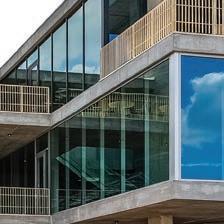




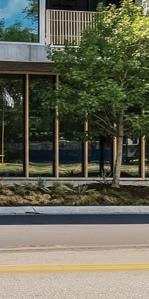
Where: 1011 S. Congress Ave., Bldg. 2, Ste. 100
The Scoop: Since opening in 2021, Soho House has emerged as Music Lane’s buzziest hangout. The space exudes a vibrant energy with patrons enjoying connection over quietude. Members can work on the terrace, socialize in Dante’s HiFi+ Bar, or book posh overnight bedrooms—just don’t whip out your cell to snag a selfie with a friend. Phones are only permitted in designated areas, a policy that helps celebrities keep a low profile. Prince Harry and Meghan, the Duke and Duchess of Sussex, even visited the spot on their March trip to SXSW, making it the only members club in town that can claim it’s luxurious enough for royalty.
Perfect for: Casual lunch with clients, people watching, post-work celebrations

Where: 2415 E. Fifth St., Ste. B
The Scoop: Nestled in Austin’s burgeoning East Side, Pershing boasts lounges, courtyards, a bar, and a shisha den, making it uniquely focused on relaxation and enjoyment. In the evenings, it’s common for Pershing’s event space to host musical performances from outstanding local artists like Mélat or JaRon Marshall of the Black Pumas, or touring acts like country musician Angel White. While those concerts are often free for members, tickets are generally available to the public.
Perfect for: Creative energy, artistic connection, recreation

Pershing’s late-night concerts and plush digs give this members-only hangout a relaxed vibe.








Where: 207 Chalmers Ave.
The Scoop: Revelry is the name of the game with this club whose membership application page poses the following question: “Do you think you’re the type of person that Ron Burgundy would hand pick to drink a glass of the finest whiskey with?”
And to be fair, we can totally see Will Ferrell hanging out here. For several years, Highbrow / Lowbrow occupied an East Austin compound that felt like a mashup between an old-world speakeasy and a backyard cookout, but change could be on the way. A January 2024 post on the company’s Instagram account announced a relocation to Austin Beach Club’s private house sometime in the future. Keep an eye on the membership group’s socials for news.
Perfect for: Parties, late-night debauchery

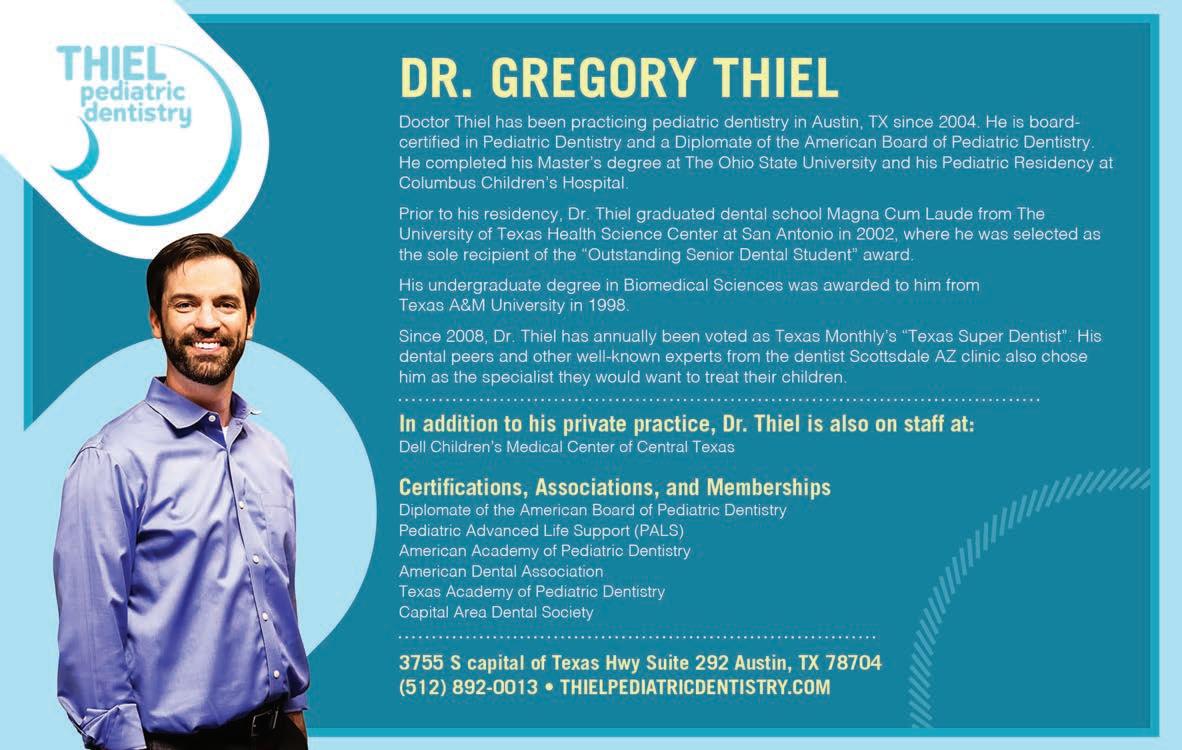
Get your tickets at austinmonthly.com/burgerbash









Austin’s East Side might as well be Abraham Mong’s outdoor gallery. In the last several years, the local artist has painted, fabricated, and installed vibrant signs throughout the area, from the intricate glowing caricature at Other Racquet Social Club to the fl aming pizza slice at Love Supreme and minimalist marquee at Zeds Ice Cream. Operating under the moniker A.mong Signwriting , the former Seattle muralist began perfecting restaurant signs and adorning windows and walls across the capital city in 2010, including projects at bygone Rainey Street









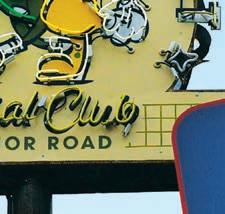


destination G’Raj Mahal and current favorites like Sour Duck Market and Nixta Taqueria. While more contemporary makers utilize mechanical manufacturing and vinyl signs, Mong favors the old-school artistic approach of freehand painting and custom, hand-pulled neon. “There are a lot of big sign companies today that can make you a perfect product,” the creative says. “That’s not really what I’m going for. I want character to be the thing that follows my work.” View more of his designs on Instagram at @among_signwriting. —Saba Rahimian
















Maravilla @ The Domain is a Senior Living community designed and curated for unique adventures, endless
We invite you to take the first step in imagining everything your next chapter can hold.

The drive-thru delights of our youth have been revived and remixed at these Austin eateries.
BY ALI KHAN
WHAT DOES IT say about a city’s food scene when you can find not one, but three ri s on the Taco Bell Crunchwrap Supreme? Or multiple sightings of McRib clones? Austin’s fascination with fast food is a phenomenon that has been steadily growing in recent years, and the trend speaks to the “keep it weird” mantra that endures, even as our culinary identity becomes more elevated. For a tasty trip down memory lane this summer, check out these four local places doing creative takes on fast food classics.


While Ben Lambert has always loved a Big Mac, he notes, “It seemed a lot bi er in the ’80s.” The JNL Barbecue co-owner tackles the size issue with two ground brisket patties, each weighing one-third of a pound. He cold smokes each patty for 45 minutes before smashing them on a hot flattop. The rest of the toppings ring true to the jingle: special sauce, lettuce, cheese, pickles, onions, and a sesame seed bun. How big is the JNL Big Mac? It weighs in at over a pound. Feel free to split one when they become available in July during the trailer’s nostalgia burger month.











During a meeting at SLAB BBQ & Beer, a question was posed: Can we make a McRib with real barbecue ribs versus the ground pork patty that McDonald’s serves? It was a hurdle to debone the ribs fast enough for service, but the staff worked it out. As for the name McDowell? “Growing up in the ’80s, Coming to America was a big deal for us,” co-owner Jason Hernandez says. In the Eddie Murphy comedy, his character works at McDowell’s, a knockoff of McDonald’s. While SLAB has other pop culture menu references like the Tony Montana and Chicken.W.A. (Chicken With Attitude), the McDowell remains its crown jewel.











Stephen Kaste grew up in New York— where White Castles abound—but his native Texan partner, Jamee Miller, had never tried them. During the pandemic, the Golden Castle co-owner considered taking a road trip just to have Jamee taste one of the diminutive burgers. Instead, they chose a different path: make their own with better ingredients. True to the original, the burger patties are steamed over a bed of one-fourth-inch diced white onions, but Golden Castle uses an 80/20 Angus chuck and Martin’s Potato Rolls for buns. (Jamee still hasn’t tried White Castle, and now, we don’t see why he would need to.)
While there are now a few Crunchwrap iterations around town, only one has brisket. CM Smokehouse’s Cade Mercer replaces ground beef with one-third of a pound of smoked brisket, then adds chili con queso, a tostada shell, salsa verde cream, lettuce, and pico de gallo before wrapping it up in a flour tortilla and griddling it on a flattop. Priced at $19, the dish is not exactly on the dollar menu, but it’s big enough to share. Besides, thriftiness was never top of mind for Mercer, who favors nostalgia and creativity: “I grew up eating Taco Bell, and I wanted to make playful elevated bar food,” the chef says.
With a novel approach to viticulture, this winemaking trio is bringing the process back to its roots. BY
FOR MOST TEXANS, Fredericksburg is synonymous with wine country. But take a deeper look, and you’ll find the majority of state-produced fruit is actually grown hundreds of miles away. Despite all the vineyards lining Highway 290, many area winemakers source their grapes from the High Plains near Lubbock or Trans-Pecos region by Fort Stockton, carting tons of fruit to the Hill Country after harvest. But upstart company Local Customs Wine Growers is on a mission to keep wine production fi rmly rooted in Central Texas—from soil to glass.
During his tenure at Austin Winery from 2016 to 2022, Travis Elliott gained experience producing seven vintages from Hill Country vineyards. Over the years, the winemaker got to know Cole Harper and Garrett Strickler of Precision Viticulture, who tend regional sites as contract farmers. Post-harvest season, the three would meet up at Mandola Estate & Vineyard’s barn in Driftwood to discuss the future of Texas wine while polishing o a few bottles. Their late-night chats led them to create a small-batch winemaking collective looking to close the gap between Texas farmers and producers.
For Local Customs, focusing on grape quality over quantity is key. Statewide practices typically dictate that winemakers pay farmers by the ton, but the notoriously hard-earned fruit is becoming even more di cult to produce in the face of erratic climate patterns such as extreme drought and freezes. With an increased pressure on each harvest, Strickler and Harper’s insights as grassroots farmers maximize the yield and get the best characteristics out of every

MAX PUGLISI
grape. They’ve learned the distinctive needs of area sites such as Salt Lick vineyards in Driftwood and D2 Farms in Wimberley, often using organic practices as they revitalize their plots. The vines respond by better expressing flavors of their surroundings, such as alluvial topsoil or limestone minerality. And with faster ripening cycles due to a warmer climate, the team knows to pick the fruit earlier to capture freshness.
Where single-varietal wines aren’t sensible, the growers focus on curated blends, aggregating the best fruits from di erent grapes or vineyards. “Our rosé is crafted as such because The Salt Lick’s Sangiovese brings structure and acidity with a faint citrus bitterness, while Mourvèdre brings in a juice and supple richness of fruit to balance,” Strickler says.
After bottling its inaugural 2022 vintage in Fredericksburg at Slate Mill (now Invention Vineyards), Local Customs launched its fi rst batch with 110 cases of the Whole-Cluster Rosé in 2023, which flew o the shelves at Austin spots like Aviary Wine & Kitchen and Tiny Grocer. This year, the brand has scaled up production to 140 cases of the rosé, plus 90 cases of their Mourvèdre Blanc. As the collective gains steam, Strickler hopes their process will inspire other statewide producers to focus on sustainability. “Longevity, vine balance, and health are what will drive these vineyards and the Texas wine industry forward,” he says. Follow the trio’s journey on Instagram at @local_customs_wine_growers.














Considered the most important textile artist of the 20th century, Anni Albers is renowned for her wall hangings, weavings, and designs. This compelling exhibition highlights how nimbly Albers moved between mediums—including her shift from weaving to printmaking in the 1960s—and transitioned between making art and designing functional and commercial objects. On view through June 30, 2024.



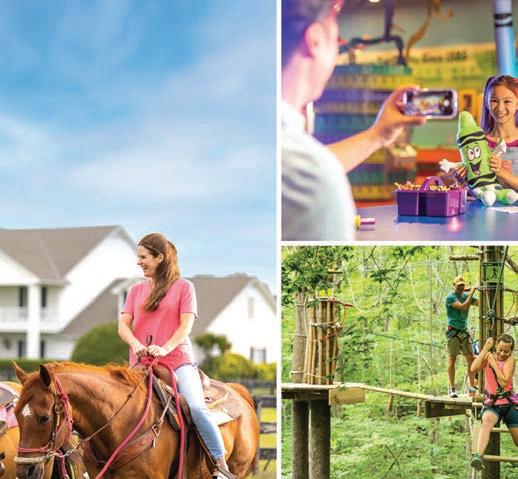








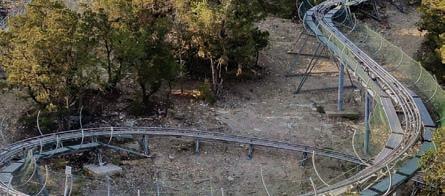



LOCATED INSIDE CAMP FIMFO TEXAS HILL COUNTRY












BOOK YOUR RIDE NOW!
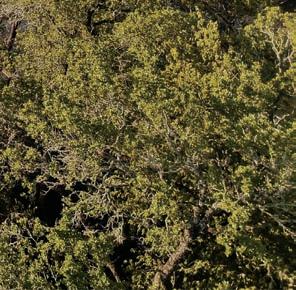




This summer, dive into a family vacation in South Padre Island, where activities, amenities and adventure await under warm, sunny skies.


















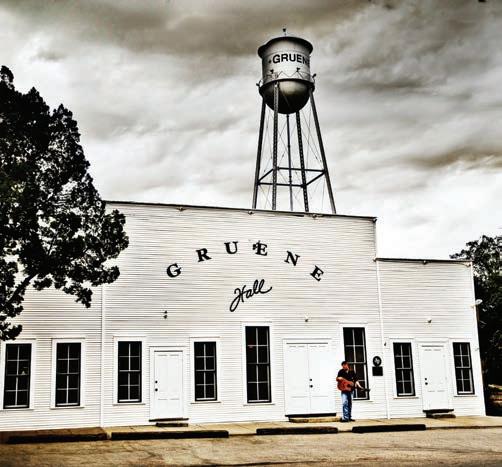
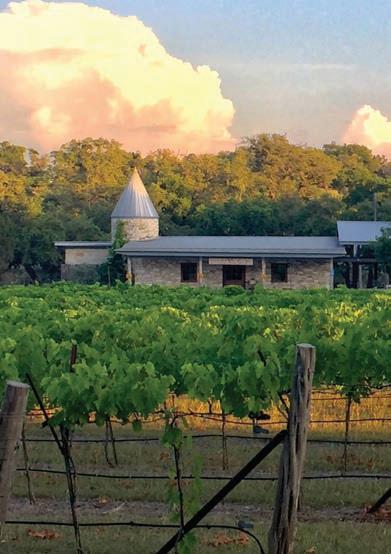











BY MADELINE HOLLERN AND LAUREL MILLER
FUEL YOUR WANDERLUST THIS SEASON WITH HAIR-RAISING THRILL RIDES, IMMERSIVE ART INSTALLATIONS, FESTIVE GATHERINGS, FOODIE CHALLENGES, AND OTHER ADVENTURES ACROSS THE LONE STAR STATE.







We promise, this isn’t a tall tale: Book an overnight stay at Longneck Manor, a 100-plus-acre Fredericksburg estate owned by a former zoo director, and you might just see a gira e peek into your window. The luxurious barn suite overlooks a pasture populated with the towering creatures. (The retreat also has an assortment of villas available.) Want to get even closer? Sign up for an interactive guided tour to feed the animals and learn more about conservation e orts. longneckmanor.com

The Preserve’s magnificent Fredericksburg property educates visitors about the mighty pachyderm. Guests can interact with Asian elephants, take photos with them, and even help give them a bath. You’ll come away from the encounter with a greater understanding of the animal’s behavior and intelligence, as well as the threats they face due to poaching and habitat loss. visitthepreserve.com

Sure, Austin has bats, but Bracken Cave Preserve outside of San Antonio boasts the world’s largest colony with more than 15 million of the Mexican free-tailed winged critters. From May to September, the nocturnal animals emerge en masse nightly to feed just before sunset, providing an otherworldly viewing experience. bat-con.org


In addition to being beautiful, majestic creatures, horses are highly perceptive and sensitive animals. Kenshō Stables founder Gretchen Fox Palmer uses Equine Facilitated Learning to foster emotional intelligence and personal growth in humans. Her all-inclusive retreats in Wimberley, touted as “well-being weekend camps for adults,” feature plenty of oneon-one time with horses paired with healing activities such as yoga and sound baths. kenshostables.com

If swimming with a “romp” of otters is your idea of heaven, head to this 150-acre McGregor sanctuary for a memorable dip. At Blue Hills Ranch Resort , visitors can book a one-hour swim in a heated tub with four adult smallclawed Asian otters, followed by 30 minutes of play with their pups. Other educational encounters include kangaroo bottle feeding and a safari to view the resident gira es, zebras, deer, antelope, and emus. bluehillsranch.com



























Good luck getting any sleep here. Fans of The Texas Chainsaw Massacre flock to this Bastrop hotel, which served as the gas station in the 1974 film. Grab a bite at “We Slaughter Barbecue,” snap a pic in front of the green van with a flat tire, and rent horror DVDs to watch inside the eerie cabins, if you dare. texasgasstation.com
After you sip, sniff, and swirl to your heart’s content on the 290 Wine Trail, hang your hat in these life-size barrel accommodations just outside of Fredericksburg. The four cabins are decorated with a wine-themed color, so you can spend the night in Chardonnay, Rosé, Tempranillo, or Cabernet. Each space has one king bed, making it perfect for a romantic sojourn à deux. winebarrelcabins.com

This Round Top guest suite offers a tribute to a classic movie. Located at Wander Inn, Thelma’s Garage features wallpapered stills from Thelma and Louise, plus two tubs next to an image of a shirtless, cowboy-hat-wearing Brad Pitt, pictured in his breakout role as J.D. in the film. gypsyville.com/wander-inn
I scream, you scream, we all scream for this playful homage to frozen treats. Known as “the Waco ice cream house,” the three-bedroom Airbnb is sprinkled with accents like soft-serve pillows, waffle cone stools, and an ice cream chair. Make your own sundae before a night of sweet dreams in this maximalist haven. instagram.com/casakumwesu


What’s better than sipping suds? Soaking in them! At this Waco hotel’s “Beer Spa,” you and a pal can sit side by side in two copper tubs filled with natural extracts used in the brewing of Czech beer. Bathe in a warm mixture of ingredients like hops and malted barley as you enjoy a flight of lagers. Bonus: The brewer’s yeast is said to make your skin silky smooth. pivovar.com/beer-spa
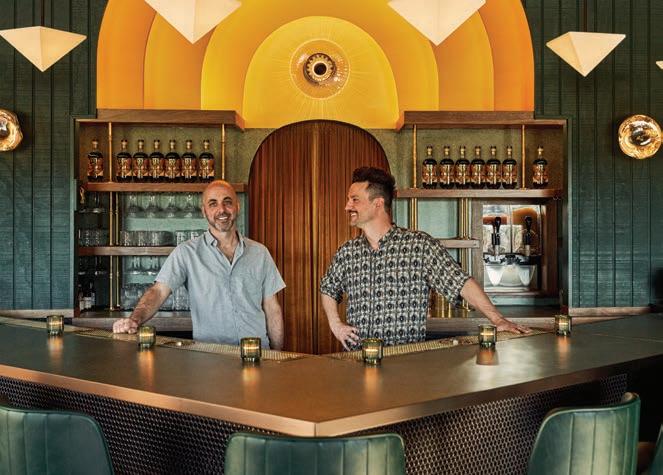
Newly opened Arch Ray Resort beckons guests to eat, drink, and be merry—then jam out to ’90s icons. In addition to its namesake winery, the new 72-acre property in Fredericksburg features a brewery (Ogle), distillery (Paul Bee), restaurant (1894 Ranch to Table), and RV and tent sites. But it’s also a destination for throwback concerts: Arch Ray hosted Scott Stapp of Creed this past December, and the resort just put on a giant eclipse festival with performances from the Goo Goo Dolls and Fastball in April. archrayresort.com
Channel your inner Don Draper at this gorgeous new Art Deco tasting room. Opened this February in San Marcos, Senza Maeso is an amalgamation of Space Age accents paired with Mad Men decor in gorgeous green and gold hues. Made from the South American cape gooseberry, Senza Maeso’s herbaceous spirit is fantastic in cocktails or alone as an after-meal digestif. Just be sure to book a safe ride home—the liqueur is a higher proof than most at 40 percent ABV. senzamaeso.com
Located in San Marcos, Senza Maeso’s brand-new tasting room is a design lover’s dream.






Intrepid diners across the globe journey to Amarillo to attempt the Big Texan’s 72-ounce steak challenge. The rules: Eat the meal in less than an hour (along with a side salad, shrimp cocktail, baked potato, and roll), and you get it for free. For those who prefer to slowly savor their steak, order the seared delights at Perini Ranch in Buffalo Gap. The tuckedaway steakhouse helmed by Tom Perini won a James Beard Award in 2014. (Austin barbecue icon Aaron





For a sweet escape, explore the Dr Pepper Museum in Waco, where the carbonated favorite originated in the 1880s. Pro tip: Bring your little ones and visit on Saturday or Sunday to check out the Liquid Lab, where kids can learn the science of soda via live demos. drpeppermuseum.com
If you love shortcake in the summertime, take a day trip to Sweet Berry Farm, where you can hand pick your own strawberries through the month of May. Purchase a box for $1 and walk through nature as you pluck juicy fruit straight from the fields. The adorable Marble Falls farm also offers sunflower picking starting around Memorial Day through early July. sweetberry farm.com


Franklin credited Perini for feeding him “one of the most memorable steaks I ever ate” in his cookbook Franklin Steak.) Traveling with a crew? Head southbound on I-35 to try the 62-inch pizza at Big Lou’s in San Antonio. The massive pie, which weighs in at a whopping 80 pounds, is served by reservation on Friday and Saturday nights. If you’ve ever wondered how Blue Bell makes its famous ice cream, get the scoop on its 100-year-plus


history with a self-guided tour inside its Brenham creamery. (Yes, there’s an ice cream parlor waiting for you at the end.) bigtexan. com; periniranch.com; biglouspizza-satx.com; bluebell.com

























← Cool off at Kalahari Resorts, the largest indoor water park in the country.

You’ll “Remember the Alamo” in a whole new way after getting a bird’s-eye view of the historic San Antonio mission via Leading Edge Helicopters The breathtaking 16-mile tour is narrated by the pilot and seats two to three passengers at a time. Get to the chopper! sanantonio.leadingedge helicopter.com #23


Strap on a helmet and speed past your friends in the glow of neon lights at Andretti Indoor Karting & Games
(Katy, San Antonio, Grand Prairie, The Colony). The climate-controlled indoor course features hairpin turns, elevation changes, and long straightaways where you can accelerate your electric go-kart up to 35 mph. andrettikarting.com

,





afternoon, chill out in the soaking pools or take a dip
When the temperatures reach triple digits, it’s best to get into a subaqueous state. At Kalahari Resorts , a massive 223,000-square-foot indoor water park in Round Rock, the whole family can test their surfing skills on a wave simulator, spin around on the Tanzanian Twister funnel flume, or even brave a free fall on its six-story-high slide, the Screaming Hyena. Discover an elevated bathhouse adventure at Carrolton’s beloved Spa Castle visitors to hydrotherapy pools, dry and wet sauna rooms, a Japanese-inspired hinoki bath, and even an aqua bar. Lake Austin Spa Resort is leaning into the benefits of cold therapy with its cool new Body Strategist experience. After a mud bath treatment for your lower legs and an al fresco warm shower, brave an icy three-minute plunge in the hydrotherapy garden (you can do it!) before enjoying a full-body scrub and massage. For a truly pampering afternoon, chill out in the soaking pools or take a dip beneath the chandeliers in the luxe reflection pool at the Houstonian Hotel’s Trellis Spa , the largest luxury spa in Texas. kalahariresorts. com; tx.spacastleusa.com; lakeaustin.com; houstonian.com/the-spa





























For an unforgettable nighttime experience, head to Waxahachie to create explosions in the sky. The Porch Venue hosts glow-in-the-dark skeet shooting, providing each guest with 50 to 100 clays as well as a shotgun. (Don’t worry, there’s a safety captain on-site.) In addition to the cosmic clay shooting, the company offers axe throwing and other outdoor games for participants to enjoy. Ages 18 and up; advanced reservations required. theporchvenue.com

#26 The Reserve at Greenleaf
Nestled in the woods of Bastrop, these luxury yurts provide a romantic retreat with on-site hot tubs, fire pits, and plushy spa robes. thereserveatgreenleaf.com












#27 Base Camp Worth the seven-anda-half-hour trek to Terlingua, this distinctive resort has transparent bubble tents where you and your boo can fall asleep watching the stars together. basecamp terlingua.com

#28 The Hobbit’s Nest
Sleep among the trees of Lost Pines Forest at this dog- and child-friendly getaway. Relaxing around a fire beside a pond with lily pads truly evokes a Tolkien-esque wonderland. lost pinesshire.com



#29 Outdoorsy Hill Country
Fire up the barbecue pit and grill out at the Luxury Lodge in Stonewall, which has a king canopy bed and two twin beds big enough for a family of four—plus Fido! outdoorsyhillcountry.com

#30 Getaway Ranch
Kiddos will love lying in the built-in hammock on the deck of this safari-style Texas Hillside Retreat in Fischer, Texas, which overlooks a scenic vista. getawayranchtx.com
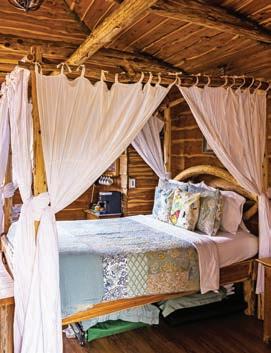

























Overview






Don’t Miss

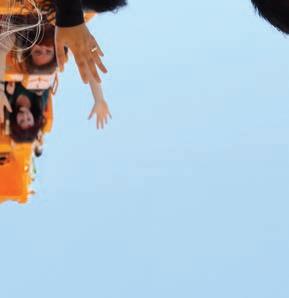















#32

Inversions and free falls abound at this daredevil’s paradise. Test your mettle on the world’s steepest dive coaster, Dr. Diabolical’s Cliffhanger, which pauses at the top of its first hill before plunging 150 feet at a 95-degree angle.
For those who prefer a slow ride, get a bird’s-eye view of the park on the brand-new Metropolis Transit Authority, a leisurely train that glides above all the attractions. sixflags.com/fiestatexas

Step right up to this oceanside carnival, which has an array of thrill rides as well as classic midway games like ring toss and whac-a-mole.

Hope you’re not afraid of heights! The Texas Star Flyer takes riders up 230 feet for a memorable 360-degree view of the Seawall as well as the adjacent Gulf of Mexico. pleasurepier.com





























#35 #35 #33 #33
#34 #34

Built to accommodate children with special needs, this charming amusement park features 25 ultra-accessible rides, including a wheelchair-friendly swing ride and Ferris wheel.
Guests at The Wharf can try catch-and-release fishing for largemouth bass, channel catfish, and bluegill perch, with actual hot dog wieners as the bait. morganswonderland.org
On the boardwalk, you’ll be havin’ some fun as you stroll beneath the illuminated lights of the Ferris wheel at night or take a ride on an old-school wooden coaster.
Feel the wind across your face as you cruise along Galveston Bay at 40 mph on the Boardwalk Beast speedboat. Fair warning: You’ll get absolutely drenched on this ride. kemahboardwalk.com
Featuring log flumes, bumper cars, and Tilt-a-Whirls, this park has all the nostalgic rides of your youth.
Rated one of the top steel coasters in the U.S., the Texas Tornado provides a double dose of fun with its two giant loop inversions. wonderlandpark.com
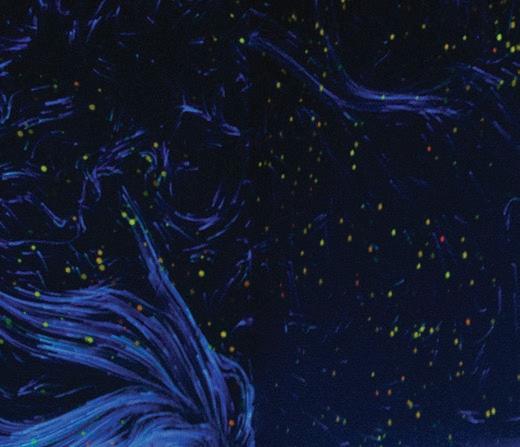

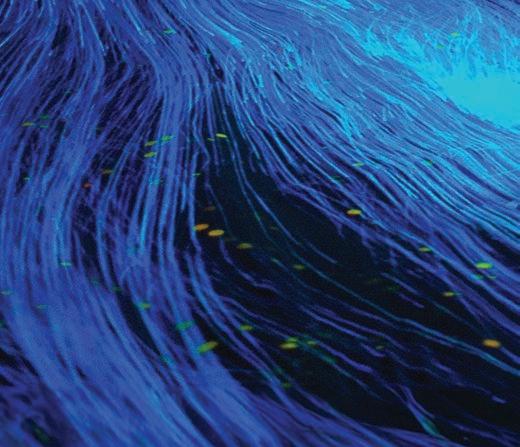




Drive one hour southwest of Austin in June, and you’ll discover lavender fields reminiscent of Provence. Celebrate the fragrant purple bloom during the annual Blanco Lavender Festival (June 7-9), which features three days of live music, beer and wine tastings, and a market filled with floral goods. blancolavenderfest.com


If you can’t get enough seafood, head to Crystal Beach for its annual Texas Crab Festival (May 10-12) to check out the crab gumbo cookoff and spirited 5K race (crustacean costumes encouraged). texascrabfestival.org





While traditional museums have a no-touch policy, Hopscotch is all about the hands-on interaction. More than 40 creatives came together to dream up the San Antonio space’s 15 immersive exhibits, which include a virtual spray paint experience and a cave of plastic bags transformed into a wonderland. Be sure to wear socks so you can jump on the neon trampoline or dive into the illuminated ball pit. letshopscotch.com
Imagine climbing through a fridge into a surreal hidden world, or crawling through a washing machine to discover a huge slide. You’ll never look at your appliances the same again after exploring Meow Wolf Grapevine. Its permanent installation, called The Real Unreal, takes visitors on a narrative journey through works by Texas and New Mexico artists. Head to the Lightning Room to experience a veritable storm, then snap a photo inside the neon Glow-quarium. meowwolf.com/ visit/grapevine


Plan a day trip through the Hill Country during the annual Fredericksburg Peach Festival (July 6), where they serve up peach-based cobblers, wine, and even barbecue. eventbrite.com

Boasting over 40,000 square feet of tech-centric installations, Houston’s Seismique turns its 40 galleries into “galaxies” featuring everything from holograms and AI experiences to millions of LED lights. Walk through precipitation without getting wet in the optical illusion Acid Rain room and look out for aliens among the vibrant trees in Eden. seismique.com



←
Luling’s annual watermelon festival features a “Thump Queen” who is crowned during the fest.

Looking for a sweet escape? Drive to the famous Luling Watermelon Thump (June 27-30). In addition to all the juicy fruit you can eat, the festival includes a carnival, car show, coronation, and a spirited seed-spitting competition. newsite.watermelonthump.com

# #43 43 # #44 44
ROCK CLIMBING:
Enchanted Rock
This striking 425foot pink granite batholith outside of Fredericksburg has routes for climbers of all levels, as well as outcrops suitable for bouldering.
# #45 45

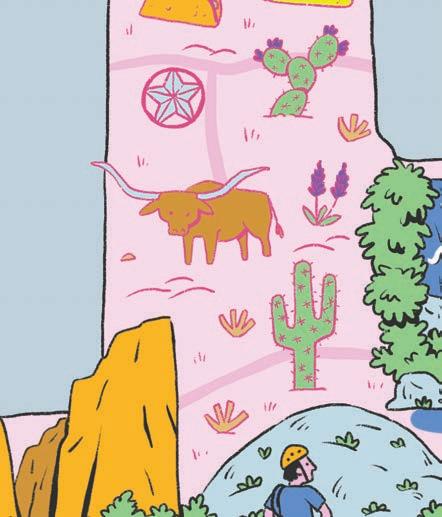
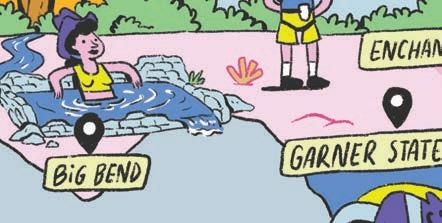

RELAXING: Hot Springs at Big Bend
A quarter-mile walk leads to this rustic enclosed soaking spot along the Rio Grande. The spring’s high-mineral content and steady temp of 105 degrees will work out any camping-induced kinks.

TUBING: Garner State Park

When you’ve had your fill of triple-digit days, a two-hour float down the Frio River will set you right. Rent a tube at the park, and don’t forget the beer.
FISHING: Caddo Lake
Drop a line and drift among Spanish moss–covered bald cypress trees. With more than 70

fish species populating the lake, a bite is practically guaranteed.


HIKING: Gorman Falls
Your reward for trekking 2.8 miles (round trip) over slippery, rocky terrain? Arriving at this lush, 70-foot travertine cascade within Colorado Bend State Park.

# #46 46 # #47 47




In addition to being a hotel, spa, and convention center, Moody Gardens is also an educational destination focused on conservation. Explore the Galveston Island resort’s rainforest habitat and 1.5-million-gallon aquarium, where you can interact with animals through its hands-on coral reef lab and live penguin encounters. moodygardens.com
If your littles ones love all things dinosaur, search for tracks in Glen Rose, where actual footprints of prehistoric creatures can be found in the bed of the Paluxy River. Dinosaur Valley State Park also boasts mountain biking trails, camping sites, and designated horse-riding areas. tpwd.texas.gov/ state-parks/dinosaur-valley




Home to the world’s first waterless indoor slide park, Slick City provides amusement with momentum. The Katy attraction features shoots where four people can race at a time, ramps that mimic half-pipes, drops that launch you into the air, and even a bowl-shaped slide called the Royal Flush. Though the park is geared toward the little ones, it also hosts adults-only nights. Why should kids get to have all the fun? slickcity.com/katy


Located in Bandera, aka the Cowboy Capital of the World, this dude ranch aims to bond families through equine experiences. Sugar and Spice Ranch founder Leigh McCourt spent her childhood on a horse farm, which inspired her to create a place where kids and parents can learn horsemanship and experience ranch life through summer camps and customized retreats. Sign up for an all-inclusive family session, which features overnight stays in the texashorsecamps.com bunkhouse.





















As Waco has transformed into a bona fide tourist destination in the last decade thanks to Fixer Upper stars Chip and Joanna Gaines, it only makes sense that the small town would garner some worldclass accommodations. Get a taste of the Gatsby life at Hotel 1928 , a gorgeous Art Deco–inspired hotel co-owned by the Gaineses that debuted last year. Cozy up with a good book inside its crown jewel—a moody two-story library space. hotel1928.com

It’s one thing to enjoy the sounds of a live concert, but another to hear the vibrations of cellos, pianos, and guitars bounce off stalactites and stalagmites. At Boerne’s Cave Without a Name, guests can journey 126 steps underground to experience unforgettable sonic performances
like a Mother’s Day Serenade by Trio Los Reyes (May 11) or a Memorial Day Weekend performance by the Woodland Wind Quintet (May 25). Regardless of the sweltering temps above, this limestone cavern maintains a cool 66 degrees year-round. cavewithoutaname.com
Fashioned from shipping containers, brand-new Hotel Herringbone takes up an entire city block in downtown Waco and will feature more than a dozen retail shops. Check out the outdoor vinyl listening studio and grab libations at Lucky Buck’s, a rooftop bar featuring views of the growing skyline and Magnolia Market. hotel herringbone.com
Originally constructed in 1894, the newly revamped Stable Hall embodies the charm of Texas venues from a bygone era: think warm lighting from wall sconces, weathered plank floors, velvet curtains, and thick wooden rafters overhead. Located in San Antonio’s historic Pearl District, the aptly named concert space served as an actual horse stable over 100 years ago, but thanks to a stunning transformation, it now hosts international touring groups like Black Pumas and rising country artists like Angel White. stablehall.com

With reflective surfaces on all four sides displaying the surrounding sycamore trees, Cameron Ranch Glamping ’s OOD Mirror House will make you feel at one with nature. Located an hour from Houston in Coldspring, the modern marvel features a private sauna, massive outdoor tub and rain shower, and natural fire pit. Put on a robe, take some deep breaths, and decompress. Ahhh, that’s more like it. cameronranchglamping.com




Performed since 1965, this lively musical in Canyon is a bucket list item for any Lone Star State resident. The dazzling theatrical performance of TEXAS, which takes place at an outdoor amphitheater inside breathtaking Palo Duro Canyon, follows ranchers and farmers as they settled in the Panhandle in the 1880s. With live horses and spectacular fireworks, the show is as big as, well, Texas. See the musical on select days from June 6 to Aug. 3. texas-show.com



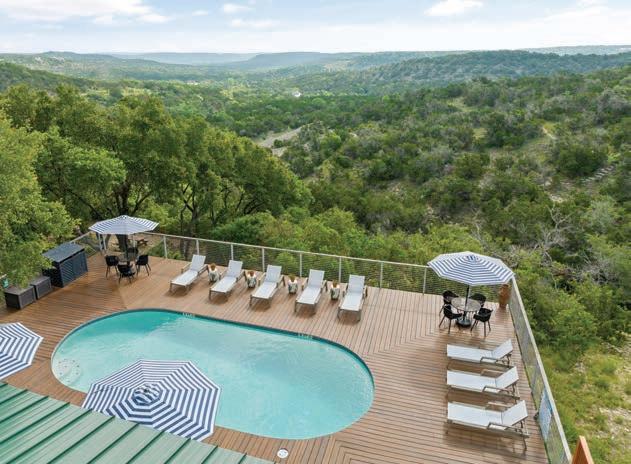
These recently revamped hotels are worth a return visit. in Rockport. The revitalized a





Talk about a glow-up! Once a seaside motor court, Galveston’s Hotel Lucine has been reimagined into a pastel-hued boutique hotel by Austin design group Kartwheel Studio. Order a cocktail on the breezy rooftop bar, which overlooks the Gulf of Mexico. If you’re in the market to do some angling, book a stay at fisherman’s paradise Reel ’Em Inn 1950s lodge is located on a private pier and features an outdoor kitchen where you can cook your catch. Nature lovers should flock to the renovated digs at The Bygone, a roadside motel turned Wimberley resort. Hike the nature trail (featuring a fossilized dinosaur footprint), sign up for hillside yoga, and cool off on the pool deck with a view of the Blanco Valley. hotellucine.com; reeleminnrockport.com; thebygone.co



By ASHER ELBEIN



As Central Texas communities swelter amid extreme drought, some find themselves on the brink of running out of water.
Is there a solution for our over-tapped aquifers and shrinking lakes, or have we passed the point of no return?

n an unseasonably warm day in 2023, conservationist Robert Mace looked down into the clear spring waters near San Marcos and saw signs of trouble. As executive director at the Meadows Center for Water and the Environment, he spends his days studying the ecology south of Austin around Spring Lake, which is fed by the Edwards Aquifer and was formed originally by hundreds of artesian springs. The sputtering seeps he observed daily around the lake weren’t the only source of concern. During a visit to cherished Hill Country swimming spot Jacob’s Well, Mace found a bone-white limestone creek bed and a stagnant, algae-smothered pool huddling down the shaft. “Not particularly appetizing for swimming in,” he recalled.
In wet years, lines of thunderstorms lumber through Central Texas, dumping life-giving rain onto Austin and surrounding areas. Some of that water runs directly along the surface, through creeks and rivers, and into open reservoirs like Lake Travis and ultimately the capital city’s network of pipes. The rest takes a subterranean path: percolating through soil and stone into the aquifers, vast flooded basins of honeycombed rock. This delicate labyrinth of caverns, rocky outcrops, and artesian wells known as a karst landscape is key to understanding water access in Central Texas. Locked beneath the limestone, these liquid vaults are safe from evaporation, and soil and rocks act like a natural Brita filter, producing the clear, clean springs that Austinites have come to love.
The streams that flow through Austin’s greenbelts are visible reminders of something many of us take for granted. Water seemingly exists behind the turn of a tap, available on demand to
drink or bathe in, to maintain expensive lawns or wash cars. Despite its ubiquity, water is largely harvested and managed out of public view; it’s easy to ignore because it seems so eternal. It is not. When it disappears, settlements die, as steadily and inexorably as grass bleaching in the sun. The failure of a spring is an unignorable warning that may portend a bleak future—a world where once seemingly infinite kitchen faucets, just like those natural flows, begin to run dry.
The San Marcos Springs near the Meadows Center had managed a more consistent production than what Mace had seen at Jacob’s Well, but as the days passed, he and his colleagues noticed evidence of an ecosystem under serious strain. Springs that normally danced up from the Edwards Aquifer into the lake silt lay dormant. Aquatic plants drooped, and long strings of choking algae sent questing fingers through the blue waters. “Over the last year, we’ve seen the lowest flows since the mid-1950s,” Mace said. “We’re seeing conditions we haven’t seen in 70 years.”
Previous spread: Bare limestone and dry docks on Lake Travis, as seen from Point Venture near Lakeway. This page: Would-be swimmers dip their feet into the dwindling water at Jacob’s Well in summer 2023.
Red flags like the scenes at Jacob’s Well and Spring Lake have been abundant lately. Throughout 2023, Central Texas seared under a record-breaking stretch of triple-digit temperatures and brutally dry weather. Trees sickened and died under the unforgiving sun. In Barton Creek, hardy grasses crept down into streambeds where fish and turtles once swam. The mighty Edwards Aquifer hit its lowest point in a decade, and the Trinity Aquifer’s levels sank by 1 to 3 feet across the region. Lakes Travis and Buchanan, which provide much of Austin’s drinking supply, didn’t fare any better: Historically low inflow from rivers has left the reser-

voirs at 42 percent of their capacity. In the caves and tunnels below our cities, the aquifer’s once-abundant resources are starting to vanish.
Despite a recent reprieve in the form of a wetter winter that coaxed greenery up from lawns and sent currents rushing down greenbelt creeks, it would be a mistake to conclude that 2023 was an aberration. Texas just saw its second-hottest summer on record; for Austin, it was the hottest, as well as the driest in 113 years. In some places, the drought has already outstripped 2011 levels, and researchers warn that worse conditions are likely on the way.
Droughts often arrive without announcing themselves. Any given storm could be the last one for months, or years. The best warning sign is an increased amount of heat, which steals the moisture from the soil, leaving less water to infiltrate the aquifers or make its way into struggling reservoirs. Anyone who’s ever watched a drying puddle on a summer afternoon could tell you that standing liquid is an evaporation factory. Even when normal rain levels arrive, the increased heat of consecutive 105- and 106-degree days e ectively steals much of it away through vaporization.
Driving back down from a trip to Dallas in mid-January, Mace saw clouds in the distance dumping watercolor smears of rain that faded and vanished before they ever hit the ground. “That’s a desert phe-
nomenon,” he said. “That struck me as not a good sign.”
Some climate models suggest Texas is in for violent swings between brutal drought and punishing floods, according to Jay Banner, a hydrologist at the University of Texas. But at some point, “drought” may stop being the correct word. Droughts,






Imagine a karst landscape as a giant, porous sponge that soaks up and retains liquid. But due to the landform’s irregular physical structure, it can be difficult to get accurate measurements on that hidden groundwater—and when it might be running low.














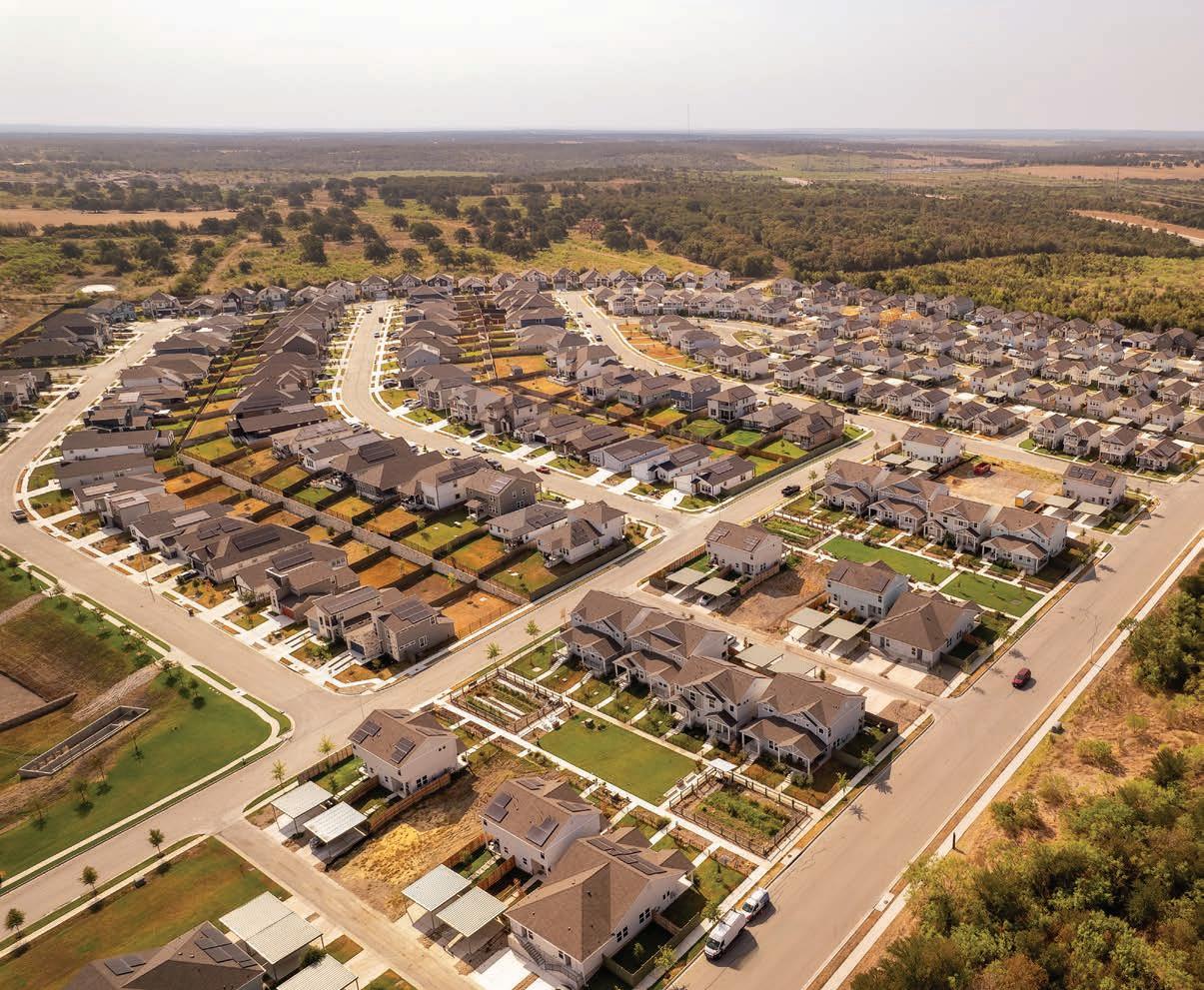
after all, are theoretically temporary. Longterm projections suggest that the “dry line”—a boundary between the parched air of the desert Southwest and the humid breath of the Gulf of Mexico—is growing wobbly, leaving its traditional home along I-35 and moving ever eastward. As it does, Central Texas will fall into the arid weather patterns of West Texas, and drought will not be an exception but the basic state of Austin’s ecology.
While the date by which this will become an all-out emergency remains uncertain, major environmental shifts are imminent. In a presentation to the City Council in January, Austin o cials noted that the city currently has enough surface water on hand to avoid increasing restrictions until at least July—but said nothing of August and September, the region’s hottest months.
For now, that likely means relatively minor restrictions, resulting in brown
lawns and unwashed cars. But the longterm prognosis is more dire. “People need to be thinking about what happens when you run out of water,” said Mace, adding that no one likes considering what Austin will do if the Highland Lakes dry up. “People say, well, it’ll rain—but sometimes, it simply doesn’t.”
Months had passed without substantial precipitation in Kyle, a rapidly growing city on Austin’s southern fringe, when Council Member Yvonne Flores-Cale received an alarming shock. It was August 2023, and the area had received less than a quarter of its typical rainfall the month prior, as the town baked in sweltering temps. But faucets turned on at office buildings and toilets flushed in homes as usual, using resources largely sourced from the Edwards Aquifer. Now, the council learned, the city had
We’re seeing conditions we haven’t seen in 70 years.” “
Over the last year, we’ve seen the lowest flows since the mid-1950s.

The
Whisper Valley residential development in Manor is one example of the large masterplanned communities appearing in the areas around Austin.
overdrawn its budget from the aquifer for the second year in a row. That left FloresCale and her colleagues with only two options: try to borrow allotments from nearby cities, or pump unauthorized groundwater and pay hefty fines.
Recent extreme weather events have coincided with a furious development boom in Central Texas, which has spurred an influx in people and a corresponding demand for water. Like much of the U.S. Sun Belt, the region has attracted newcomers with its warm weather, low taxes, and cultural cachet. Austin is among the fastestgrowing metropolitan areas in the U.S., as the humming tech industry has welcomed new campuses from companies like Tesla, Amazon, and Apple. The growth has sloshed out along the city’s margins and frontiers: Hays County has exploded in population over the last decade, vaulting from 160,000 to 240,000. Overall, the Greater Austin metropolitan area (which stretches from Round Rock to San Marcos) is on track to hit anywhere from 5 million to 8 million people by 2050.
Ultimately, Kyle’s City Council negotiated a deal to pump from San Marcos’ allotted shares of the aquifer, despite the latter’s own declaration of Stage 4 drought and accompanying restrictions. While San Marcos’ council members voted unanimously to sell the water to their neighbors, the action carried a whi of bowing to the inevitable: Whatever they had decided, the city’s utility manager told a KUT reporter, Kyle almost certainly would have had to keep pumping from the shared aquifer regardless.
ly, the state turned its attention to aquifers. Today, Texas sources about 60 percent of its water from the ground—more than most Western states save California.
It’s a natural choice since groundwater is a cheap, well distributed, and seemingly reliable source. So rich are the region’s aquifers that experts often refer to them in terms of banking: vaults, safety deposits, savings accounts, and—more recently—debts and withdrawals. Today, the resources within most of the state’s aquifers are diminishing, with over a quarter of them being emptied at ever-increasing rates. The levels in the Edwards Aquifer in particular have dropped at a rate of around 8 inches per year since 2019.
The city of Austin relies entirely on the Colorado River and Highland Lakes for its drinking supply, but smaller cities in its orbit—as well as accompanying towns, free-standing developments, and individual homes—draw from the aquifers. As people flock to the picturesque Hill Country, conservation measures are necessary, but policing its use proves tricky legally.
Districts can regulate large permits for businesses or suburban developments. But thanks to an antiquated, 1904 legal policy called the “rule of capture,” private landowners can pump as much as they like, regardless of e ects like springs going dry on neighboring properties. While individual households alone don’t sap much of the supply, there are thousands of such home sites—and they’re beyond regulators’ reach.
“We toe a very fine line between our legislative mandate to control or minimize groundwater [extraction], because it’s considered private property,” said Tim Loftus, general manager of the Barton Springs/Edwards Aquifer Conservation District, which supplies some homes and businesses in South and West Austin. “You can regulate too far and lose a legal battle.”
People say, well, it’ll rain—but sometimes, it simply doesn’t.” “
Even with the 2023 crisis averted, the short-term nature of the fix was lost on nobody, particularly the council members. The city had bought its way out of a jam. But as Flores-Cale asked pointedly at the August meeting: “What’s our plan for next summer, and then next summer, and then next summer?”
Texas water policy exists in the long shadow of a historic dry spell. In 1957, at the end of a decade riddled by the most devastating drought to hit Texas in 600 years, half of the state’s agriculture had collapsed. As a result, governments vowed to take preventative measures, among them new management districts and a massive buildup of reservoirs—including lakes Travis, Buchanan, and Austin. Increasing-
The result is an increasing number of long straws going into the same milkshake—and some are greedier than others. In 2022, Aqua Texas, an arm of the larger utility company Essential Utilities, sucked up nearly double its legal limit. When the Hays Trinity Groundwater Conservation District proposed $448,710 in penalties, the company countered with a dismissive proposal of $0. The two parties have yet to reach a settlement over the 2022 overpumping, so Aqua Texas is currently operating without a permit. That hasn’t stopped it from pumping. Last year, Texas Monthly reported that Aqua Texas blew past its permit of 90 million gallons and pulled 156 million gallons from sites near Jacob’s Well. Then, the company filed a federal lawsuit asking a judge to set aside penalties. In the meantime, Jacob’s Well—a






Along with development and climate change, Austin’s booming tech industry could exacerbate the region’s water shortage. According to reports from one watchdog agency, creating an integrated circuit on one 30cm silicon wafer takes up to 2,200 gallons of ultrapure water, which amounts to about 10 gallons for a single microchip. Major fabrication centers require millions of gallons of water each day.
The capital city is home to a multitude of such facilities, most notably the Samsung plant in North Austin, which opened in July 1996. The same South Korean semiconductor giant has broken ground on a new $17 billion fab in Taylor, just east of Austin, and is expected to begin operations this year.
We’re likely to see more tech activity in the future, as Gov. Greg Abbott approved the Texas CHIPS Act last year, allotting funds to subsidize companies that produce microchips in the Lone Star State. The program will ultimately invest about $1.4 billion to stimulate the industry locally. On the national level, President Joe Biden signed off on a similar initiative, devoting $52 billion to semiconductor manufacturing in the U.S.
Elon Musk’s Tesla Gigafactory also made headlines for water usage recently, as the Austin Chronicle reported that the plant used 127.7 million gallons of water in just five months during 2022, according to data the newspaper obtained from Austin Water.
While the tech industry yields a sizable economic benefit for Silicon Hills and offers thousands of jobs to Austinites, the resources consumed in the process warrant keeping a close watch on the effects of these large-scale operations.
—Bryan C. Parker
spring that historically has managed at least a trickle during even extreme droughts—spent 222 days bone dry before flows hesitantly returned this January.
Aqua Texas didn’t just acknowledge that it had overpumped: The company argued that doing so was a necessity since the population in the area has doubled in the last 20 years. The same dynamic has been playing out throughout the Hill Country. Districts around Austin’s perimeter are struggling to accommodate the growing demands and have often voted to approve permits that dip deeply into the aquifer’s reserves. A linchpin of Texas’ water management after the 1950s drought, accessing aquifers has been key to serving new development. But utilities are using the population boom to justify their overuse, creating a compounding problem. Even in the absence of outside factors, with regular rainy seasons, it’s a recipe for trouble.
But, of course, there are outside factors. The aquifers and Highland Lakes both depend on rain, and as Texans learned to their horror in the 1950s, the rain can fail. The Lone Star State is a volatile place, and even at the best of times, drought is a constant possibility. The National Oceanic and Atmospheric Administration estimated 18 drought events with an economic impact of $1 billion or more in Texas since 1980, including the current one, which began in 2021.
danger of spiraling out of control—like water swirling down a drain, leaving everyone high and dry.
As a response to the 2008-2016 drought—a dry spell that saw some of the Highland Lakes sink to their lowest recorded levels and left some of the region’s water intake plants dangerously close to empty—Austin began seriously considering how to secure its drinking supply. In 2018, the city announced its Water Forward Plan, bundling together a set of strategies to manage usage and secure enough supply for the next hundred years.
What’s our plan for the next summer, and then next summer, and then next summer?” “
Conservationists and regulatory ocials worry that the region’s boom will eventually outstrip its drinking supply, with disastrous results. Charlie Flatten, general manager of the Hays Trinity Groundwater Conservation District, has a succinct way of summing up the dangers of Central Texas’ endless population boom. “The rate of use exceeds the rate of recharge,” he said. “You do the math.”
New arrivals to Central Texas are moving right into the crosshairs of what looks increasingly like a doom loop: an ever-growing population leading to an increasingly urbanized landscape and exploding demands for water, while climatic shifts lead to significant drops in the available supply. Hotter temperatures are exacerbating supply issues at the same time that natural springs, which have weathered millennia’s worth of extreme droughts, are now failing due to rampant overpumping. The situation is in serious
Among those strategies is an attempt to reverse some of the processes at play in the Hill Country, and actively pump treated water into laterally occurring aquifers during wet years, according to Marisa Flores Gonzalez, supervisor of Austin’s Water Resources Team. That approach would create a “savings account” that would be safe from evaporation and could be drawn on during emergencies. At the moment, the city is in the process of identifying a location for a pilot project somewhere in either Travis, Bastrop, or Lee Counties. The fi nal concept, which planners aim to have operational by 2040, would initially store around 60,000 acrefeet (around 19 billion gallons) of water. By 2115, the city hopes to have 240,000 acre-feet (a current year’s supply) on hand in the aquifer.
These kinds of aquifer storage projects are sprouting up elsewhere in the seasonally temperamental parts of Texas, including places like Midland, El Paso, and San Antonio. But other cities are looking further afield. Alliance Water, a new regional water authority comprised of several cities such as Buda, Kyle, and San Marcos, aims to tap an aquifer southwest of San Antonio, transporting its riches via a large pipeline. But without fundamental changes to those residents’ lifestyles, tapping new aquifers only kicks the problem a bit further down the road. The long-term survival of Central Texas communities requires the choice to be considerably more frugal about usage. Ignoring leaky pipes and using perfectly good drinking water to flush toilets and nourish lawns are wasteful luxuries that the region simply cannot a ord.
As an example of what this can look like, David Baker, executive director of the Wimberley-based Watershed Association, pointed to the “One Water” approach adopted by Wimberley’s Blue Hole Primary School. The plan captures rain, condensation that drips from AC units, and greywater (drainage from bathroom sinks, showers, and clothes washers) for everything from plant irrigation to flushing toilets. Groundwater, meanwhile, is reserved solely for drinking. “The school is saving 50 to 70 percent of the resources a normal school would have used,” Baker said. That strategy is projected to save the district around a million dollars in bills over the next 30 years. “We can do that with homes and subdivisions as well,” Baker added. “That kind of strategy really needs to become the norm in the region.”
Retrofitting these kinds of systems can be expensive, but that just means it’s vitally important to include them in new buildings up front rather than incurring greater costs later. Unfortunately, the pipeline and aquifer projects remain far in the future, and most of the developments outside the city aren’t making use of such conservation strategies. Instead, they are continuing to pump precious resources while sleepwalking into potential catastrophe. And policymakers historically have a bad habit of ignoring proactive fixes, even simple ones—only springing into action after disasters have forced their hand.
If there’s a silver lining, previous calamities provide clues about what’s needed, and what challenges lie ahead. From 2015 to 2018, Cape Town—a South African city located many miles from its highland reservoirs—su ered a drought that took its nearly 5 million residents right to the edge of running out of water entirely. O cials instituted restrictions and begged residents to conserve as much as possible. But they were shocked and dismayed to discover that only half of the households complied. The city ultimately had to install remote shut-o s in people’s houses and seek alternative water sources. Luckily, those actions staved o disaster for long enough until the rains eventually returned.
Beyond the hurdle of managing the natural resource itself, there’s the problem of humanity’s general stubbornness. Even in the wake of a brush with tragedy, conspiracy theories swirled online after the event—with some blithely asserting that the restrictions in Cape Town had been unnecessary, the drought made up. People had just overreacted.
Which is, in a sense, what Central Texas is up against: When gifted with increasingly rare rain and a refilled aquifer, many assume that the crisis has been averted. If the oncoming catastrophe is postponed, some assume there was never any danger at all. The rain will always come. The aquifer will always be refilled, and if it won’t, we’ll just find another one. The tap will always flow, and the springs will bubble, and the water will simply be there : eternal, unending, wastable.
Unless there comes a day—the first of who knows how many—when it doesn’t rain. When the impact of too many people has tipped the ecosystem past a point of no return. And millions of people wake up to discover that, in fact, they were wrong.
From top: Completed in 1941, Mansfield Dam turned part of the Colorado River into the reservoir we call Lake Travis, which supplies water to thousands of Austinites; A water treatment facility near Mansfield Dam.

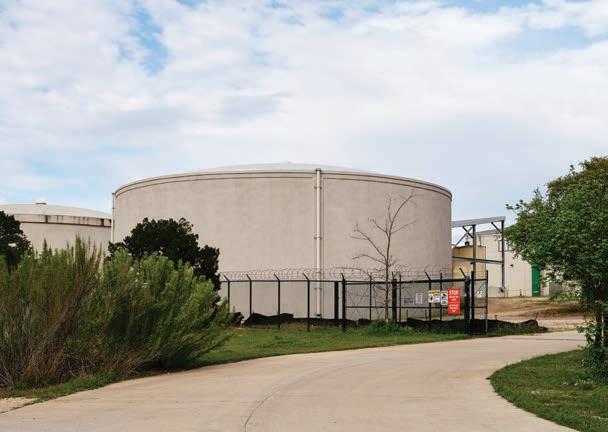














As Founder and Superintendent of the AESA International School System and Head of AESA Prep Academy of Austin, Barbara Garza shines as a trailblazer in education. Recently featured on the cover of K12 Digest, Barbara has visionary leadership that has garnered acclaim. Since 2009, AESA has o ered unparalleled college prep education, boasting high rates of admission to prestigious universities with substantial scholarship awards. The addition of a robust culinary program, spearheaded by Chef Aran Goldstein, reflects AESA’s commitment to innovation. With a focus on grass-fed, pasture-raised, and clean ingredients, the program provides deep nourishment for its students, faculty, and families to thrive on. Chef Aran’s dedication to healing through nourishment mirrors AESA’s holistic approach to education, reinforcing its status as a forward-thinking institution.


Deandra Grant is the Managing Partner of Deandra Grant Law. Grant is a national instructor on DWI law and science and the author of James Publishing’s The Texas DWI Manual. She is a member of the American Chemical Society and the American Academy of Forensic Sciences. In 2015 she received the ACSCHAL Forensic Lawyer-Scientist designation from the American Chemical Society. In 2016, Grant earned her master’s degree in pharmaceutical science and a graduate certificate in forensic toxicology from the University of Florida. She is an assistant chromatography instructor at Axion Analytical Labs in Chicago. Grant has been named a SuperLawyer by Thomson Reuters since 2011. She runs all six of Deandra Grant Law’s Texas o ces in Dallas, Denton, Allen, Fort Worth, Waco, and Austin. Her team defends DWI and criminal cases throughout Texas and also o ers immigration services. Grant is known as “The Lawyer Lawyers Call.”




Charlotte Lipscomb has served the Austin Luxury Real Estate community for many years, representing Buyers and Sellers with exceptional sales and purchases of some of Austin’s finest properties. Lipscomb Luxury Group has a variety of inventory opportunities available and coming soon that you will not want to miss, such as a very special Texas Hill Country retreat on 46.5 acres, and another coming soon in West Lake Hills with phenomenal City Views. Let’s stay in touch!
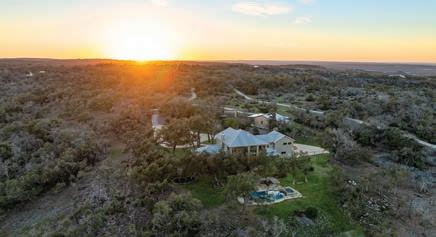




Looking for all the best inspiration for your yard? Presenting Austin Home’s second annual outdoor event: an exclusive tour of the area’s coolest properties.
Prepare to add to your backyard wish list. These homes will showcase outstanding exterior features ranging from outdoor kitchens, pools, and decks to dreamy green spaces and more. MAY 2024 See the latest details at: austinhomemag.com/greatoutdoorstour



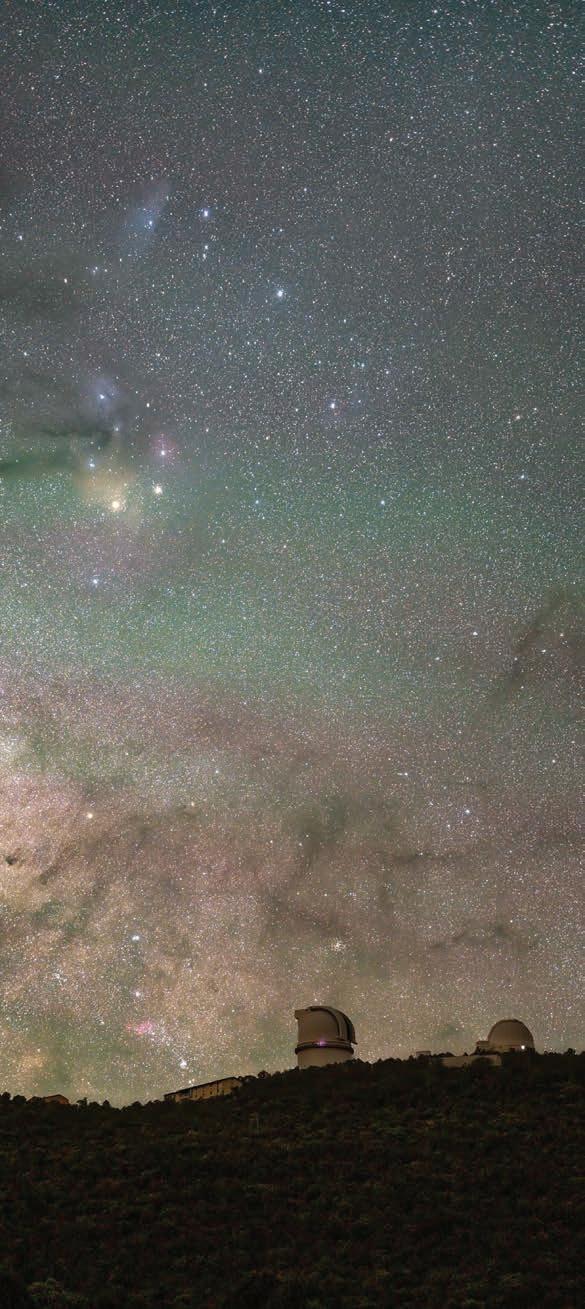


There is never a bad time to visit the Big Bend region of the Chihuahuan Desert. Winters are largely sunny and mild with the occasional cold spell bringing a brief and beautiful blanket of snow. Spring brings balmy days, brisk nights and glimpses of gorgeous desert owers.
The idea of Summer in the desert might give pause to some, but the high desert mountains are often among the coolest areas in the state, especially compared with the extended high temperatures in Texas metros.
Explore the outdoors in the cool early mornings, spend the afternoons shopping or taking in the cultural scene, and hang out with friends and family in the deliciously comfortable desert evenings. Savor the summer with these highlights in some of our favorite Big Bend communities.
FORT DAVIS (fortdavis.com) v DRINK IN the gorgeous mountain views and relax under the shady oak groves of Davis Mountains State Park – and enjoy interpretive programs o ered almost every day about the park’s ora, fauna, geology, history and prehistory.
Don’t miss the McDonald Observatory ’s renowned star parties o ering constellation tours and telescope viewing on Tuesdays, Fridays and Saturdays. They ll up well in advance, so be sure to make a reservation at mcdonaldobservatory.org.

MARFA (visitmarfa.com) v TAKE THE OPPORTUNITY to slow down for Spring Break in Marfa . Browse the elegant galleries and boutiques along San Antonio Street and stately Highland Avenue, with its classic promenade to the Presidio County Courthouse.
Slow down and enjoy our West Texas pace of life. Sip an iced tea or margarita on the porch while the kids shoot some hoops, or just kick back and grill with friends at Co eld or Travis parks, just blocks from downtown.
ALPINE (visitalpinetx.com) v A SHORT HIKE up Hancock Hill behind the campus of Sul Ross State University is quickly rewarded by views of the surrounding mountain landscapes. Then stop in at the Museum of the Big Bend – its striking new addition adds top-class art exhibition spaces to its award-winning historical exhibits.
Finally, make the most of the cool, beautiful summer evenings with live music almost every night in the outdoor courtyard at The Ritchey, one of Alpine’s most historic music venues.


Following a quarrel over a pair of noisy owls, one celebrated UT executive’s neighbor wound up dead.
BY HAMILTON JONES

JUST OUTSIDE OF beloved swimming hole
Barton Springs sits a bronze sculpture of three men engaged in jovial debate. Veteran Austinites might know one of these “philosophers” as capital city luminary and former UT executive Roy Bedichek—a name they may also recognize from his eponymous middle school in South Austin. But few realize that this local legend was once involved in a neighborly dispute that ended in death.
In a chapter of his 1947 memoir, Adventures with a Texas Naturalist, Bedichek reminisces about a pair of western screech owls discovered in his yard. Ever endeared by wildlife, he decided to erect a nest for the creatures on a fence shared with another property. The birdhouse had openings on both the east and west sides, but as fate would have it, the owls’ preference turned out to be squarely toward Bedichek’s neighbor.
Understandably grumpy about the situation, the adjacent resident made his displeasure clear, referencing an ominous superstition involving the nocturnal birds. “Other neighbors became apprised of the controversy, and there developed owl and anti-owl factions,” Bedichek writes. Facing increasingly emphatic pleas to remove the avian abode, the nature enthusiast maintained his position as landlord for his feathered friends, apparently not a believer in the same strigiform mythology.
One day, as the cantankerous neighbor and Bedichek were engaged in conversation, the latter glanced up to see his owls watching from the branch above. When Bedichek loudly acknowledged the pair’s presence, one of the winged creatures discharged its bowels directly onto the neighbor’s face before flying away.
In a blind rage, the latter stormed home and slammed his back door behind him. But it was far more than his pride that was wounded. The following morning, the man was found in bed with a severe fever, and a doctor was summoned. According to Bedichek, the physician called the illness “by some unpronounceable name.” Specifics of the avian affliction aside, just two weeks later, the neighbor succumbed to his headshot. With no murderer ever brought to trial, it’s fair to call the incident a classic who-dunnit.





Meet Linda shes a pro at standup paddleboarding, kayaking, and swimming, infusing every moment with pure joy. This is how she packs for joy in Lake Charles. How would you? , -




